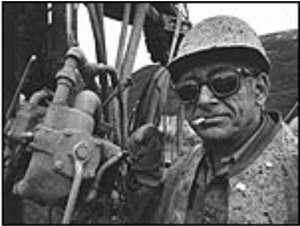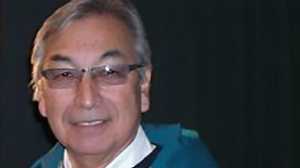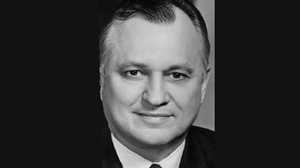The Discovery of Oil on the North Slope
"The thing that struck you first was how vast it was. There wasn't a speck of anything as far as you can see on the horizon — there was not one man-made thing of any kind. Looking to the south, you could just barely see a little rippling effect of the Brooks Range Mountains in that direction and the sun was over in that direction. It was just a very vast area." — Oil exploration worker Jerry Landgrebe

Expensive Exploration
Jerry Landgrebe left college in Fairbanks to look for work in the oil business. He connected with a Canadian company out of Calgary that was heading to Alaska's North Slope to drill for British Petroleum (BP). That was in the fall of 1968. BP, one of the North Slope's earliest oil pioneers, had so far come up empty-handed. They knew the oil was there, but BP had been about to give up looking when Atlantic Richfield and Humble Oil tapped in to a vast oil field that spring. In October 1968 the three companies joined forces to form the Trans-Alaska Pipeline System. Now the pressure was on to find the big source -- and they had company. Oil seekers from Mobil Oil Corporate, Texaco, Standard Oil Company of California and a number of smaller companies were also rushing to Alaska.
Roughing It
Because there were no roads and no airports, Landgrebe arrived on the North Slope in a bush plane. The pilot let the passengers off right on the tundra, on the shores of the Beaufort Sea. The Canadian company Landgrebe was working for had barged in an old rig, bulldozers and camp, and had deposited it all on the beach.
Jerry Landgrebe: "We had our hands full just sorting through the stuff and getting it ready. Then we had to put it on sleds and take the cats and bulldozers and drag them inland on the edge of the river there. I'm sure it was timed with the tundra being frozen so we wouldn't have to drag the stuff across soft tundra. There was no one telling us we couldn't do that. Of course there was no road or anything so you did what you had to do."
Striking Black Gold
Landgrebe and his co-workers set the drill up on a platform, to prevent it from melting the permafrost. They worked 12 hours a day, sometimes 16 hours. When the geologists thought they were getting close, they would just keep going. By March 1969, BP had its own first North Slope discovery. Landgrebe remembers the day the BP well hit pay dirt:
"All of sudden we were down, I'd say it was well over 8,000 feet. The geologists knew something was looking pretty good by what was coming up out of the hole. The bit was chewing its way down. They have a method of putting a valve on the wellhead and they're able to test the flow and pressure with this valve mechanism. When it came time for that point, everyone was excited. We just took a cat and ripped open a big pond area or pit. They called it a reserve pit and it was dug as deep as you can get in the permafrost. They pushed it out maybe a football width and length -- a big square. So then they began testing that and, lo and behold, they started opening that valve and doing all the readings and there was just no end to it. That crude oil just billowed out into the reserve pit and filled it right up."
A Changed Landscape
Landgrebe went on to work on the pipeline, operating heavy equipment. The last time he saw Prudhoe Bay was in the 1980s, and by then the North Slope was completely transformed.
Jerry Landgrebe: "It was all massive buildings and roads all over the place -- vehicles and pick up trucks. Oh gosh, just everything. It was actually like a little city, like a regular metropolis. Of course, they're expanding in all directions. But the heart of it right there is Prudhoe Bay where the original work went on, there are big airports and big air terminals. Everything is there now. It's funny to me, I remember where the roads go and they called that one the spine road and there's one little plaque, one little monument which was the old original well that we drilled."






